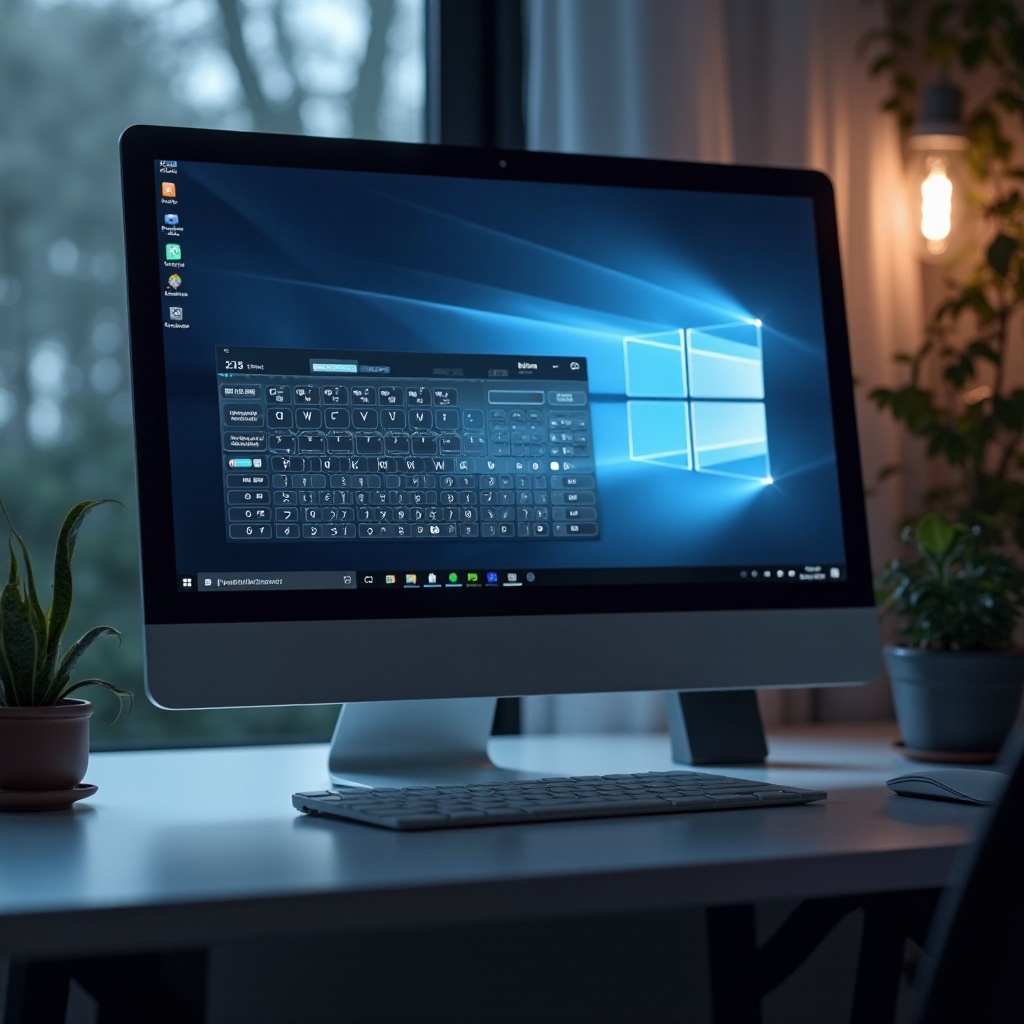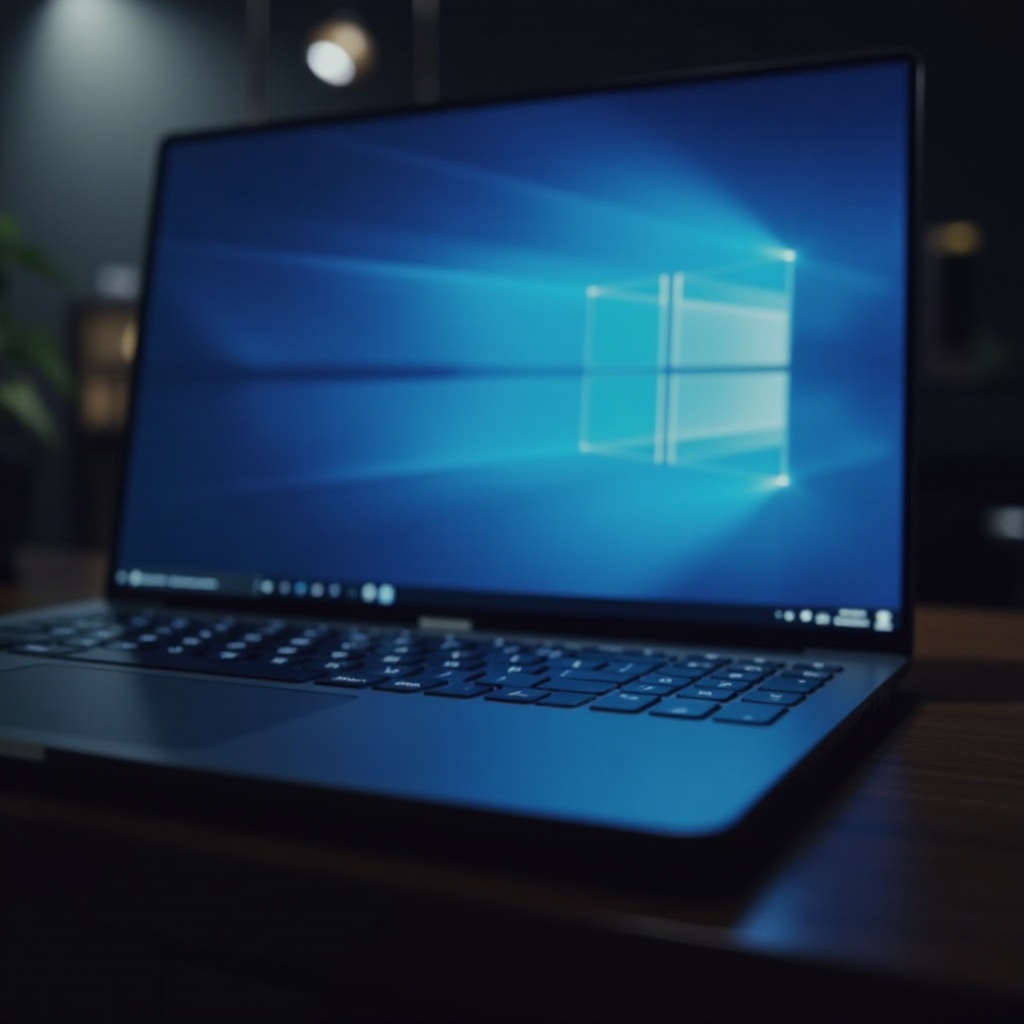Introduction
Effortlessly navigating digital interfaces is crucial, especially when relying on on-screen keyboards. Whether because of hardware malfunctions or personal preference for virtual keyboards, understanding how to access on-screen keyboards across various operating systems is vital. This guide aims to make the process simple across Windows, macOS, and Linux platforms, while also providing insights into customizing these keyboards for optimal use.

Understanding On-Screen Keyboards
Virtual keyboards, or on-screen keyboards, are software applications offering an alternative typing method without needing physical keys. These are invaluable tools, particularly for individuals with disabilities, and they become essential in scenarios involving hardware issues or on touchscreen devices. Familiarizing yourself with the functions of these keyboards and simple access techniques can significantly enhance your digital experience.
Bringing Up the On-Screen Keyboard on Windows
Windows offers multiple methods to access its on-screen keyboard, providing options to suit various preferences and situations.
Using Windows Settings
- Click the Start menu or press the Windows key.
- Navigate to Settings.
- Go to Ease of Access.
- Click Keyboard on the left pane.
- Toggle On-Screen Keyboard to activate it on your screen.
Shortcut Methods
- Utilize the keyboard shortcut Windows + Control + O for instant access.
- Alternatively, enter “On-Screen Keyboard” in the search bar and select the application from the results.
Troubleshooting Common Issues
Should the on-screen keyboard fail to open:
– Verify that Ease of Access is correctly configured.
– Update your Windows OS, as outdated versions might affect functionality.
– Reboot your system to rectify temporary issues obstructing the keyboard access.

Accessing the On-Screen Keyboard on macOS
macOS includes built-in utilities facilitating straightforward access to on-screen keyboards.
System Preferences Method
- Open the Apple Menu.
- Select System Preferences.
- Go to Accessibility.
- Choose Keyboard on the left side.
- Check Enable Accessibility Keyboard.
Quick Access Tips
For ease, add the Keyboard Viewer to your menu bar:
– Access System Preferences > Keyboard.
– Check Show keyboard and emoji viewers in menu bar.
– Select Show Keyboard Viewer from the menu bar next to battery or Wi-Fi indicators.
On-Screen Keyboard Options for Linux Users
Linux users have a variety of application options for on-screen keyboards, each optimized for different distributions.
Popular Applications
- Gnome On-Screen Keyboard: Best suited for Gnome desktop environments.
- Florence Virtual Keyboard: Renowned for customization and user-friendliness.
Installation Guide
- Launch Terminal.
- For Gnome, input
sudo apt install gnome-shell-extension-onboardand press Enter. - For Florence, type
sudo apt install florence.
After executing these commands, you can activate the respective on-screen keyboards through Linux settings.
Customizing Your On-Screen Keyboard
Enhance the functionality of your virtual keyboard through various customization options.
Adjusting Layout and Appearance
- Visit settings within the on-screen keyboard application.
- Modify sizes, color schemes, and layouts to accommodate your preferences or screen dimensions.
Enabling Additional Features
- Enable predictive text for faster typing.
- Adjust auto-correct settings to match your typing style.

Practical Applications of the On-Screen Keyboard
On-screen keyboards serve purposes beyond accessibility, bolstering efficiency in multiple situations.
Accessibility Benefits
For individuals with mobility impairments, on-screen keyboards facilitate smoother digital interactions and broaden accessibility.
Typing Efficiency
Maintain productivity by utilizing on-screen keyboards on devices lacking physical keyboards, such as tablets, even in environments where hardware restrictions might impede your work.
Conclusion
Bringing up and using on-screen keyboards need not be challenging. With knowledge of activating these virtual keyboards across various operating systems, you can ensure ongoing productivity and accessibility. Tailoring the on-screen keyboard to your preferences can further optimize digital interactions, greatly benefiting users across the board.
Frequently Asked Questions
How do I quickly access the on-screen keyboard on Windows?
Use the shortcut Windows + Control + O to promptly open the on-screen keyboard.
Can I use the on-screen keyboard as my primary typing tool?
Yes, on-screen keyboards can be your primary input method, particularly when physical keyboards fail or for accessibility purposes.
What are common issues with on-screen keyboards and how can I solve them?
Common issues include failure to open due to incorrect settings. Check your accessibility settings or restart the system to resolve most problems.
